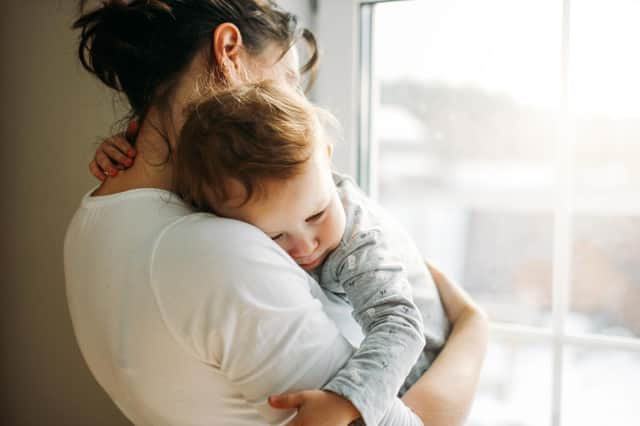Researchers find 'clear difference' in health of Scottish and English children


England should follow Scotland’s example in preventative healthcare, researchers have concluded, after finding “clear differences” in immunisation, breastfeeding and A&E visits between Scottish and English children.
In England, “urgent action is needed” to tackle worsening health in children under five years of age, the Academy of Medical Sciences warned last month.
Advertisement
Hide AdAdvertisement
Hide AdPoor rates of infant survival, increasing demand for mental health services, rising rates of obesity and tooth decay, and falling vaccination rates were all listed as areas to address.
Speaking to the British Medical Journal (BMJ), the Institute of Health Visiting (IHV) said England needs 5000 more health visitors to meet the basic requirement (mandated by regulation) of five visits between a child’s birth and their starting school.
IHV chief executive Alison Morton told the BMJ there is a “natural experiment” happening between England and Scotland because of the countries’ contrasting approaches to providing health visitor services.
“The investment in Scotland, where there is a more intensive programme of home visiting, is interesting, because when you look at various indicators—including immunisation rates, breastfeeding, and also emergency department visits—there are clear differences,” Professor Morton said.
In 2015, Scotland adopted a £40m Universal Health Visiting Pathway, which means all families should receive 11 home visits, starting with an antenatal appointment. Eight visits are in the first year of a baby’s life, and parents of children with additional needs are offered more.
According to the IHV, more than four in five (83 per cent) health visitors in Scotland say they can provide continuity all or most of the time, compared with less than half (48 per cent) in England.
An IHV report in December, also found that emergency department attendances by young children in England are at an all-time high, after rising 42 per cent in a decade, but in Scotland this steep increase has not been seen.
The SNP’s Evelyn Tweed said this is because the Scottish Government “has prioritised ensuring that children have the best start to life”.
Advertisement
Hide AdAdvertisement
Hide Ad“Immediately from birth parents are supported with the baby box, the best start grant and a programme of home visits from medical professionals,” said the Stirling MSP.
“This research also clearly shows that the SNP’s decision to focus on preventative healthcare is benefitting our young people – with rates of immunisation and breastfeeding higher than that of England, and visits to A&E significantly lower.
“The SNP will continue to focus on how we can build on these figures and ensure that our young people have a secure and healthy start to their life.”
Declining immunisation rates in England have brought about outbreaks of measles. The UK Government is currently trying to bring MMR vaccination rates above the current rate of 84.5 per cent. In some areas, including parts of Birmingham and London, rates are lower than 75 per cent.
In Scotland, while rates remain lower than the target of 95 per cent to achieve herd immunity, just over 93 per cent had received their first MMR dose by age two, and by age six, 91 per cent had received both doses.
Comments
Want to join the conversation? Please or to comment on this article.